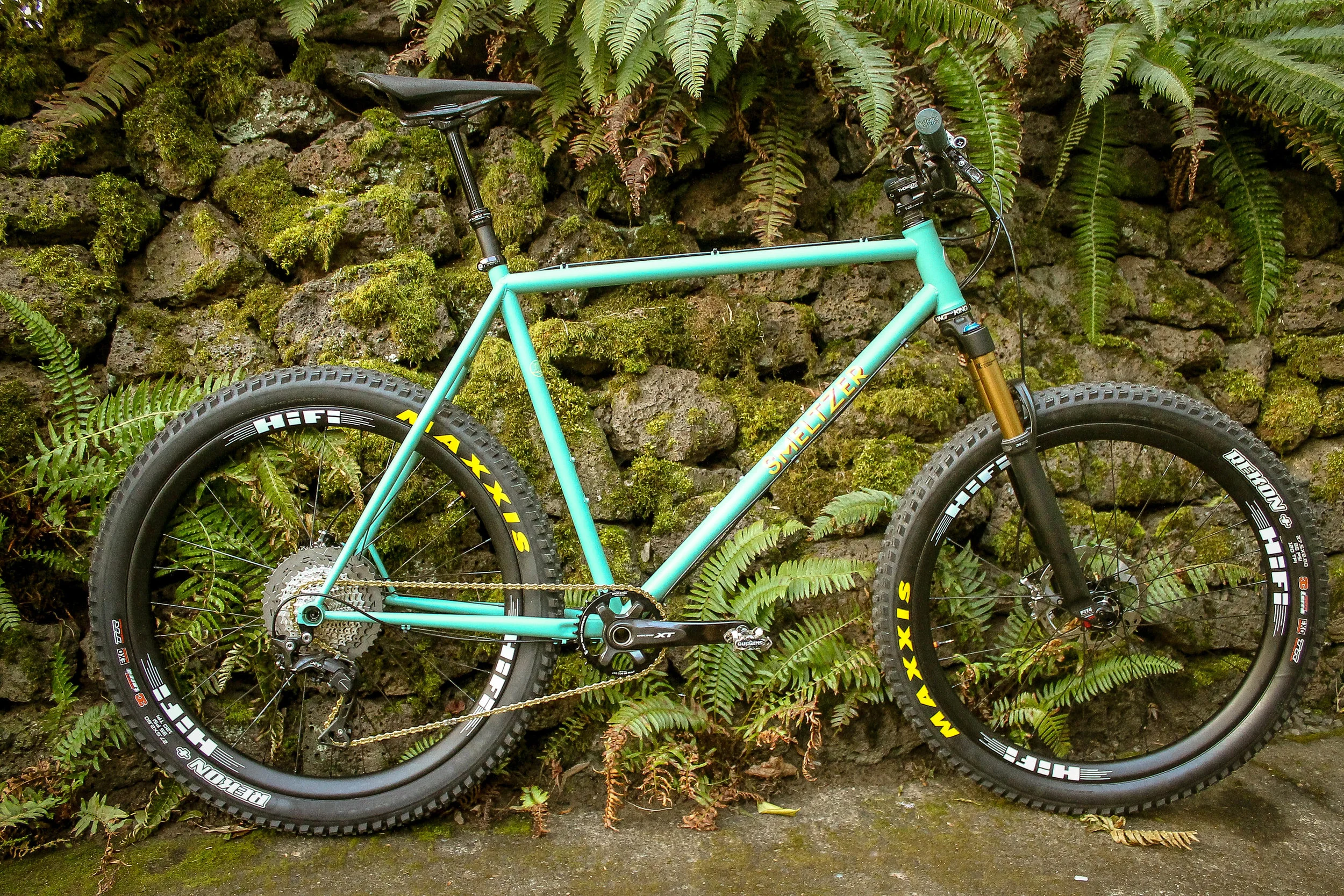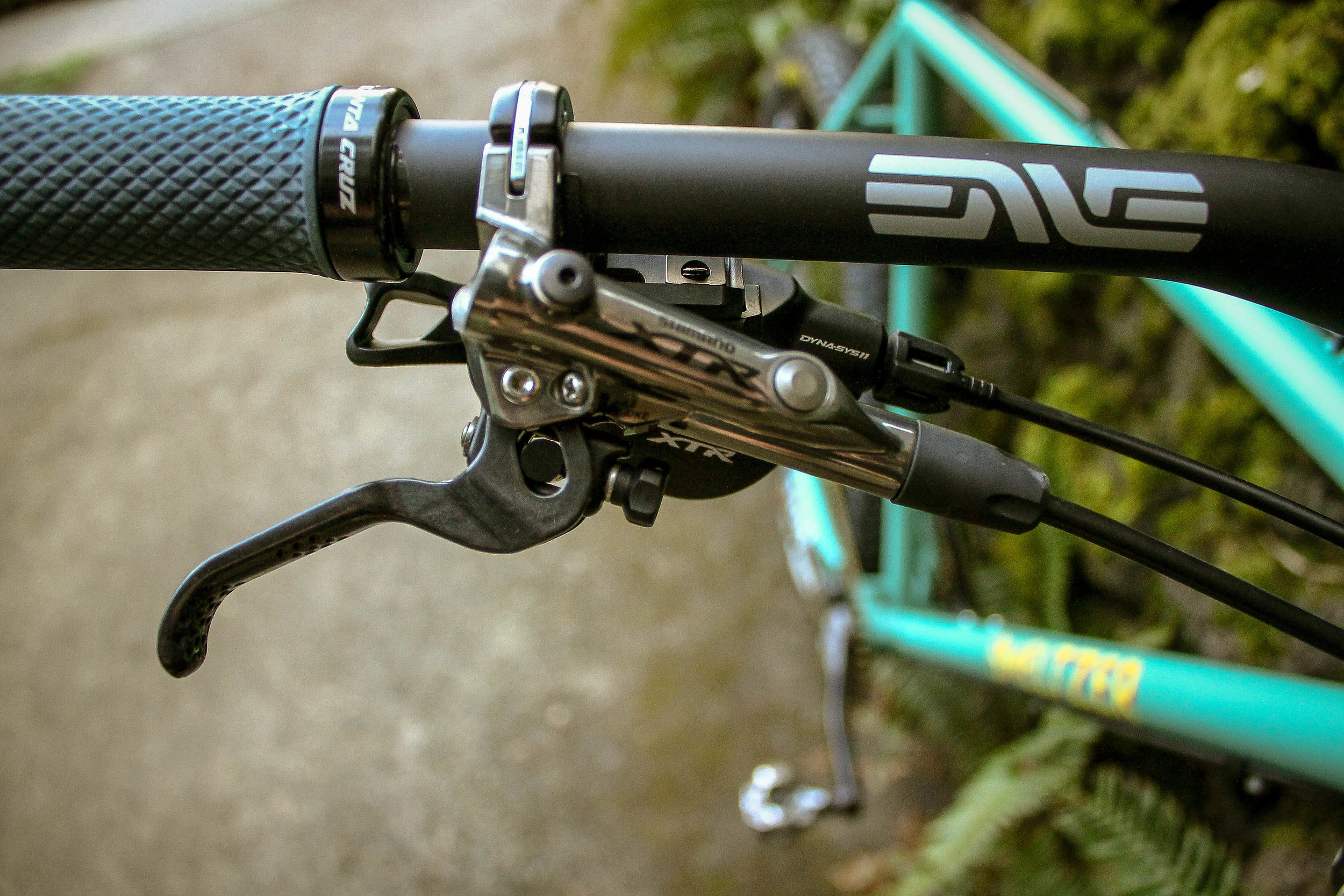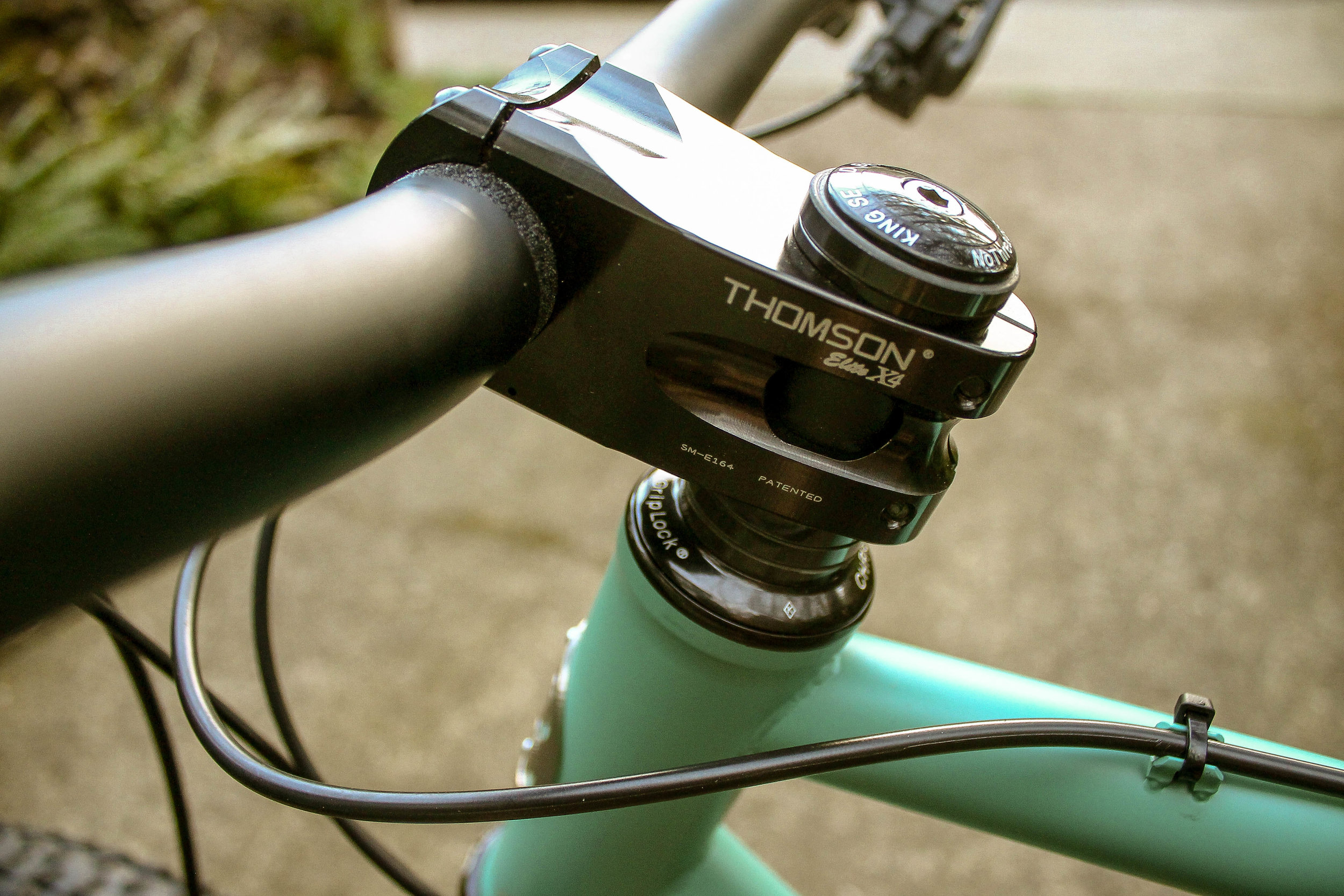‘Adventure Hardtail’. It’s a tricky thing to define. Is it a mountain bike? Is it a gravel bike? Will it go on adventures? What constitutes an ‘adventure’? will it still be comfortable after six hours? can it climb? aren’t mountain bikes sluggish on gravel? more importantly, Can I fully send it? Do I even want to send it? What the hell does that really even mean?
With more questions than answers we set about brainstorming the ideal vehicle for navigating some of our favorite places. Places with steep, punchy trails. Places with tricky precipitous climbs and equally spicy descents. Places with 4000 feet of climbing over 20 miles. Places with lots of chunky rocks. Places where drop bar handling and fixed seatposts become a liability. Places like the Lewis River Trail, Plains of Abraham, Siouxon Creek, Surveyor’s Ridge, Fifteenmile, Gales Creek and Hospital Hill above White Salmon.
Just build a mountain bike. Easy. Done.
While it would be relatively straightforward to create a bike perfectly suited for the trails, the catch here is that is should be able to ride to and from said trails. This includes gravel, dirt, forest roads and paved stretches. While just about all of the aforementioned terrain can technically be navigated on modern drop bar adventure bikes, they’re not exactly the best tool for the job when it comes to handling, speed and confidence on trails. If our Gifford collaboration was the all-road bike that is great on trails, the idea here was to create a trail bike that climbs and rolls efficiently on gravel without the penalties associated with most singular-purpose mountain bikes.
We landed on the idea of a 27.5 hardtail primarily because of the extra cushy array of options available in the 27.5 format. This would be anything from a 2.25” up to a 3” tire, from fast-rolling filetreads to burly knobbies, a pretty versatile range. The ride would need to be snappy and playful, so a lightweight minimal-travel fork and short chainstays were factored into the design. Another consideration was the fact that the rider (myself) would be 6’4”, so this was going to be a big bike, which means a lot of steel, so the idea here was to lighten things up as much as possible. To accomplish this we based the build around a set of boost-spaced carbon HiFi Session Wide wheels. Other carbon bits include the Brooks carbon Cambium C13 cutout saddle and Enve M9 bars, technically an 810mm wide downhill bar, but proportionally a perfect fit given the size and footprint of the bike.
Considering the intended riding style, we opted for a long top tube to accommodate plenty of reach with a slight saddle-to-bar drop for an XC riding position. We gave it a 68 degree head tube angle to keep things quick without sacrificing playfulness on the descents! A longer seat tube length was designed as both a nod to the geometry of the classic steel hardtails of the mid-90’s and to build in plenty of support for the internally-routed dropper post. The S-curved seatstays were designed to add a touch of back-end flex for long days in the saddle.
For the groupset we opted for a mix of XT and XTR. XT for the portions that tend to take a beating: rear derailleur, cranks and pedals. XTR for the more dainty bits, shifters, brakes and levers. Full hydro. 180 rotor up front. 160 in the rear. The Fork is a Fox Float 34 with 120mm of travel which is more than enough cush for the places it will be riding. The initial gearing setup is a 34T ring with 11-46 in the back. We’ll see how the gearing goes on the climbs. A 32T might make more sense up front depending on the amount of climbing we get into long term.
We started with a Thomson Elite X4 0° 60mm, but after a handful of rides it became clear I wanted quite a bit more reach. I am one who really enjoys climbing out of the saddle, both on drop and flat bars, so to give a bit more leverage we went with an X4 in a 110mm w/ a -10° drop angle. The longer stem improved front end stability overall and tracking at speed, giving the cockpit a slightly leaner, meaner riding position.
The Ride
On trails, it kicks ass, plain and simple. To clarify, the ride is nimble, agile, playful, snappy and surefooted, climbing like a goat. I was surprised at how consistently I was able to clear technical sections that I’ve previous had to walk. The 110mm stem definitely helps by allowing a healthy amount of leverage out of the saddle. Descending feels ultra-nimble w/ the post dropped and out of the way, inspiring confidence at speed through steep root sections and rocky ruts. The traction available with a 2.8” footprint cannot be overstated. The Supernaut grips where it feels like most would slip. Cornering is whipsmart with an effortless BMX feel through the flowy-bermy stuff. For what it is worth, I have yet to get in over my head with this bike and that includes plenty of terrain that has sent me tumbling over drop bars.
So did we satisfy our objective of creating a mountain bike that works well on gravel? I would say absolutely, yes. With the fork locked out and rigid the Supernaut pedals much more efficiently than other hardtails I have ridden. On sustained gravel climbs, I find it inspires a healthy amount of spirited cleat-tugging, out-of-saddle efforts. That is a good thing. That is how you ride when you are feeling it. Contrasting that with the fact that so many modern mountain bikes are only designed for slow seated spinning climbs, I’d say the Supernaut excels in the ‘gravel efficiency’ category. Are there lighter, faster tires than 2.8” Rekons? Definitely. Would a rigid carbon fork and drop bars further increase comfort and efficiency for longer days? For certain, but we quickly reach a tipping point where that idea starts duplicating bikes I already have, so for the foreseeable future it will stay a ‘mountain’ bike.
FULL BUILD SPECS
Frame: Smeltzer Bikes custom geometry. Columbus Life tubing. XLish.
Fork: Fox Float 34. 120mm.
Shifters: Shimano XTR 11spd
Brakes/Levers: Shimano XTR hydro
Rotors: 180mm/160mm Shimano Ice tech
Rear Derailleur: Shimano XT
Crankset: Shimano XT, 175mm
Chain Ring: Wolftooth Components 34T
Cassette: Shimano XTR 11-46T
Chain: KMC
Headset: Chris King
Bottom Bracket: Chris King Threadfit 24
Stem: Thomson X4 110mm +/-10°
Handlebar: Enve M9 810mm
Seatpost: KS Integra Lev internal dropper 27.2
Saddle: Brooks, C13 Carved 158
Pedals: Shimano XT
Wheels: 27.5 Boost-spaced HIFI Session Wide carbon
Tires: Maxxis Rekon 2.8”/WTB Riddler 2.4F/2.25R















